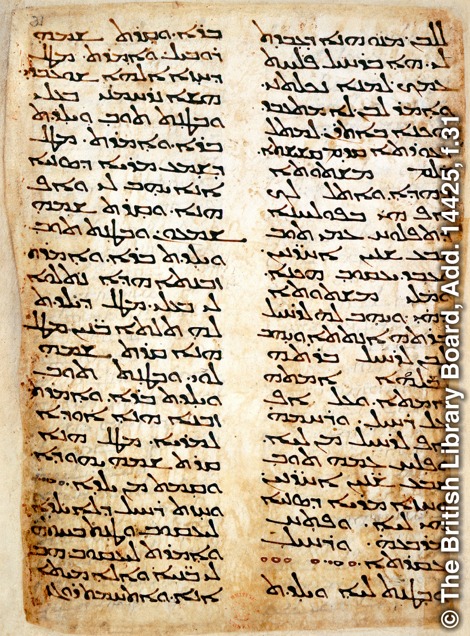
There are several Syriac Lexicons that are available to use to study the Aramaic words: 1. William Jennings, Syriac New Testament Lexicon, published by Light of the Word Ministry with coded numbering system 2. R. Payne Smith, A Compendious Syriac Dictionary, Wipf and Stock 3. Brockelmann's Syriac Lexicon, Translated and updated by Michael Sokoloff …

There are several Syriac Lexicons that are available to use to study the Aramaic words: 1. William Jennings, Syriac New Testament Lexicon, published by Light of the Word Ministry with coded numbering system 2. R. Payne Smith, A Compendious Syriac Diction…

Syriac Peshitta of the Pentateuch, 464 C.E., the second-oldest dated manuscript of Bible text Romans 7:23-8:7, in a Peshitta manuscript Sinai Syriac MS 3 (Schoyen MS 2530), from the 500's. Codex Ambrosianus - 5th Century Ambrosian Library, Milan, Italy. An…

The Aramaic language has its beginning with the sons of Noah. The first biblical clue to the origin of Aramaic is found in Genesis 10:22, which informs us that Aram was the youngest son of Shem. What Aram spoke has been called “the Mesopotamian language.” This was the language that was then tran…

Etheridge, J.W., A Literal Translation of the Four Gospels From the Peshito, London: Longman, Green, Brown & Longmans, 1846. Etheridge, J.W., The Apostolical Acts & Epistles From the Peshito, or Ancient Syriac, London: Longman, Green, Brown & Longmans, 1849. Lewis, Agnes Smith,…





